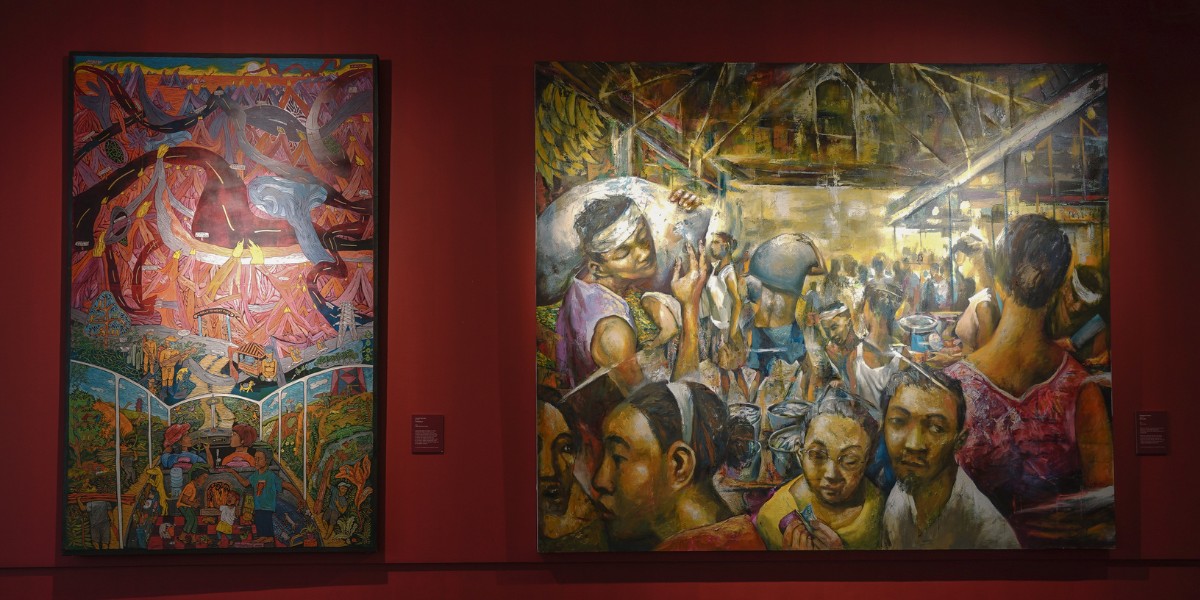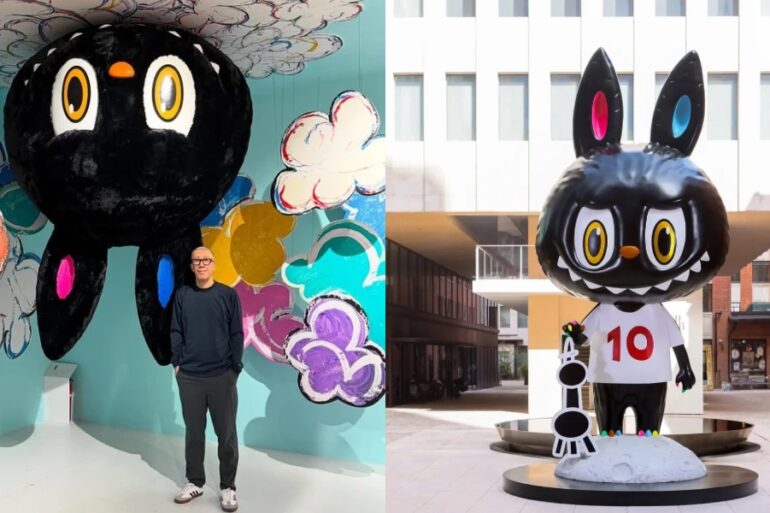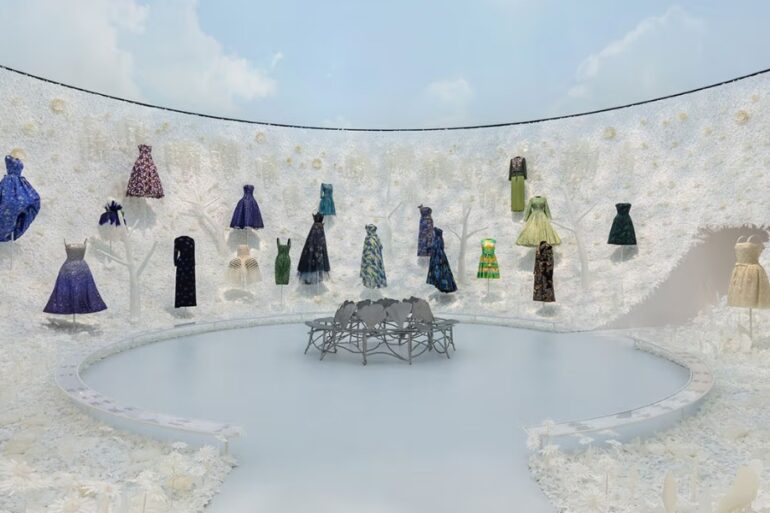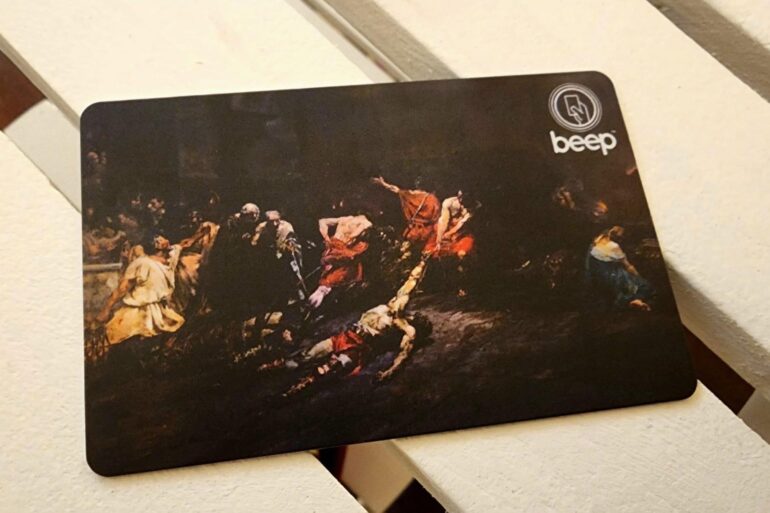The exhibit at the National Museum features 36 artworks, which are part of BSP’s prized 4,000-piece collection.
Art and beauty endure in the moments we hope for a brighter future and even amid troubled times. Art mirrors society, challenges norms, and encourages action. This is the core message reflected by Bangko Sentral ng Pilipinas’ collection of artworks showcased at the National Museum of Fine Arts until November 2027.
Titled Kultura. Kapital. Kasalukuyan: Contemporary Art from the Bangko Sentral ng Pilipinas Collection, the exhibit “tells us stories of our identity, our struggles, our hopes,” said BSP Governor Eli M. Renolona Jr. during the launch on Aug. 14, 2025. “They remind us that building a nation takes both economic strength and cultural depth.”
“Art should not be hidden away; it should be seen, explored, and discussed. Through this exhibit, we hope to inspire more people to engage with Filipino art and reflect on how it tells our shared story,” BSP Deputy Governor Bernadette Romulo-Puyat added.
Related story: Museums without the masters: 10 Metro Manila museums for everyone
Related story: At the Metropolitan Museum of Manila, a master conservator comes home
Led by Museo BSP, the exhibit features 36 masterpieces, which are part of the organization’s prized 4,000-piece collection kept in vaults or hung at the BSP Complex in Malate, Manila and in its private offices. Each artwork explores culture and present-day realities through themes like economic resilience, labor, and national growth. “The exhibition frames art as a living response to contemporary realities,” BSP said in the exhibit’s notes. “These works offer windows into lived experiences, providing insights into the cultural and social forces that continuously shape national identity.”
It took BSP nearly a year to bring Kultura. Kapital. Kasalukuyan to life, and it will be on view for free at the National Museum of Fine Arts for more than two years until Nov. 15, 2027. Guests can immerse themselves in two thematic areas that are both centered on the art of Philippine society, economy, and culture.
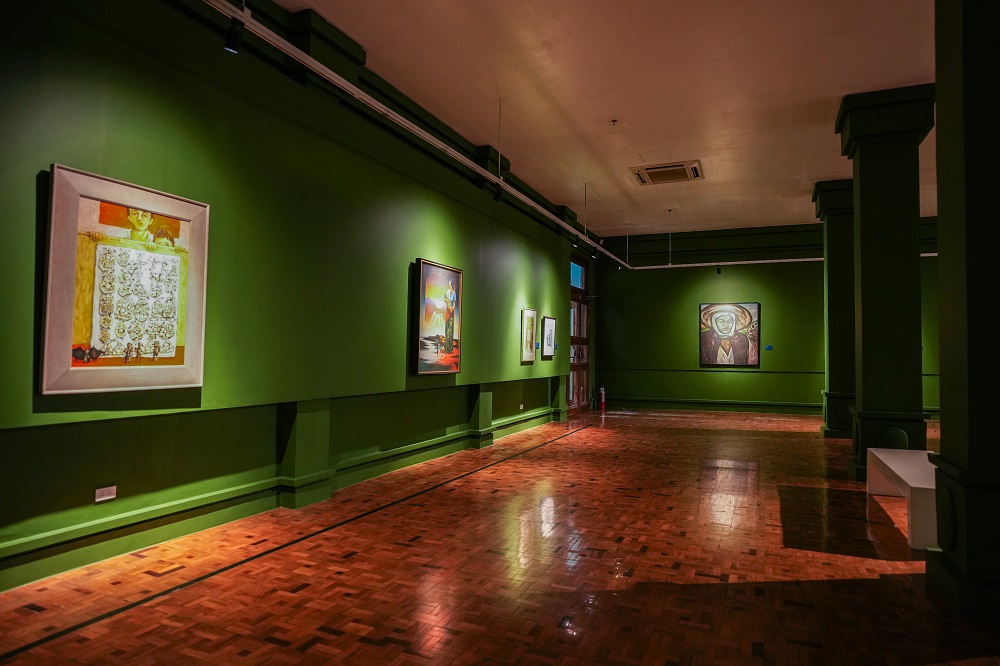
Pagmulat, located in Gallery XVIII, brings together artworks serving as a voice for the unheard. It reflects the everyday realities of Filipinos, then until now, and how art has been key for local artists to speak the truth, shape national consciousness, and keep history alive.
JP Orallo, officer at Museo ng BSP which houses the organization’s collections, explained the concept to The POST and other members of the press during the exhibit’s media launch on Aug. 9. He began, “Pagmulat is really about social realism; it’s a call to action. The artists featured here are the modern versions of Amorsolo—the ones who started a movement. Their artworks here capture what people during a certain era were going through and their struggles in life. They show that everything is not rosy.”
Artworks include Pablo Baens Santos’ oil painting on canvas titled “Magsasaka,” Santiago Bose’s mixed media painting on paper called “Travels,” as well as Antipas Delotavo’s “Dambuhala” and Renato Habulan’s “Sacada”—oil paintings on canvas created in 1980.
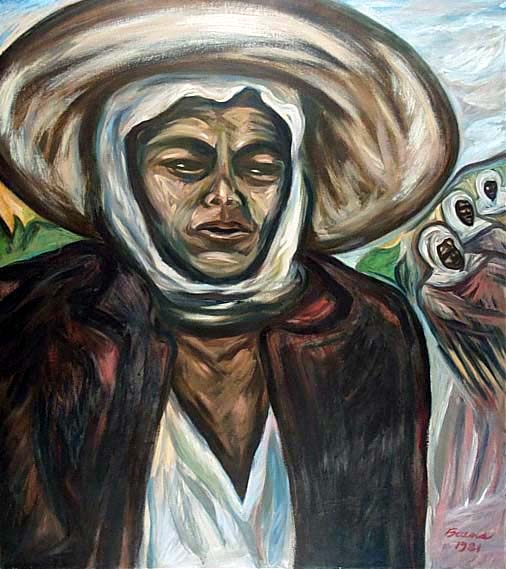
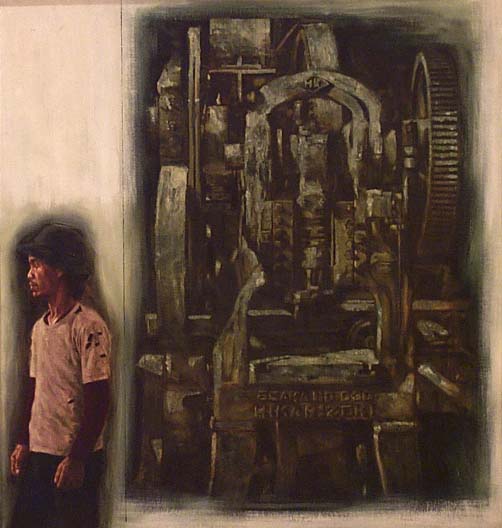
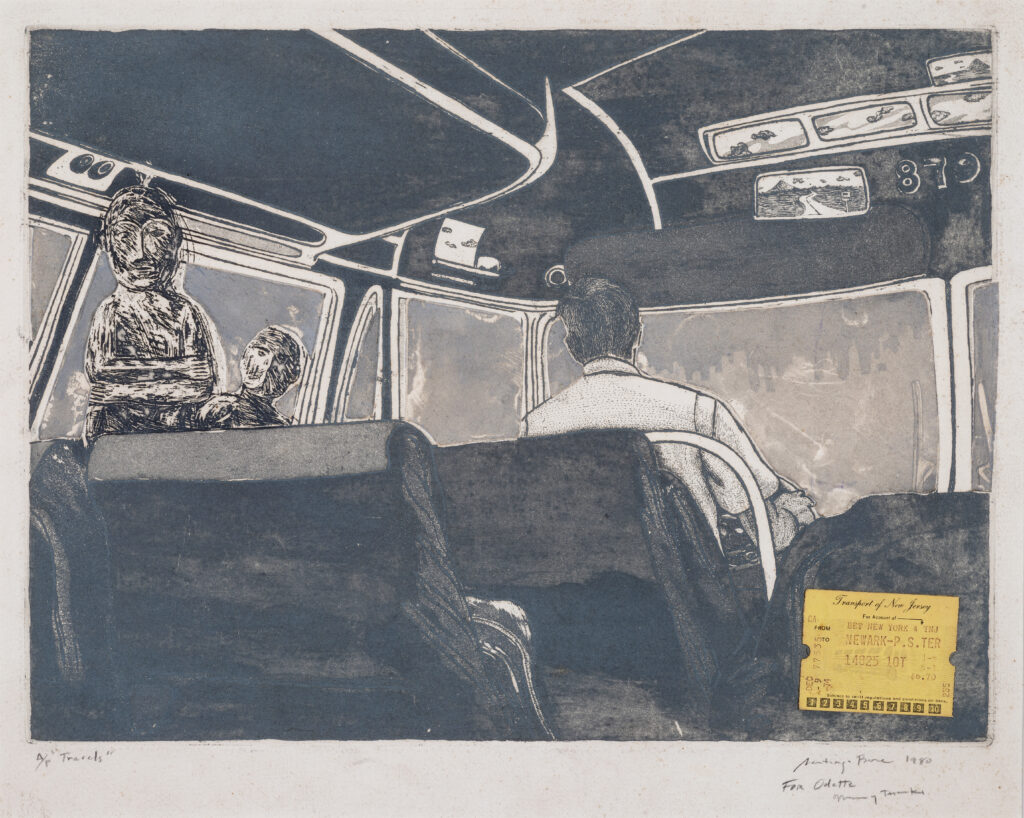
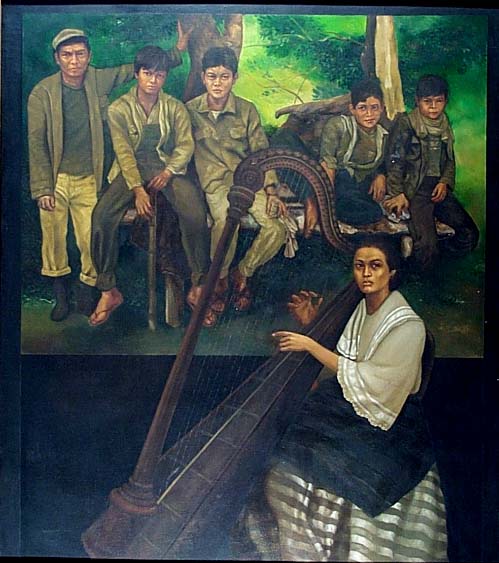
Many of the artworks in Pagmulat are filled with color and appear far from what they really are—dark and gloomy. One example is Onib Olmedo’s oil painting on canvas titled “Tiffany,” which the artist created in 1972.
“Olmedo is really known for his paintings with distorted figures. So this painting, Tiffany, actually draws from loneliness and depression,” Orello explained. Most of Olmedo’s works are “very dark and depressing,” he added. They often feature an old lady or a young woman struggling through life alone, just like his painting “Tiffany.”
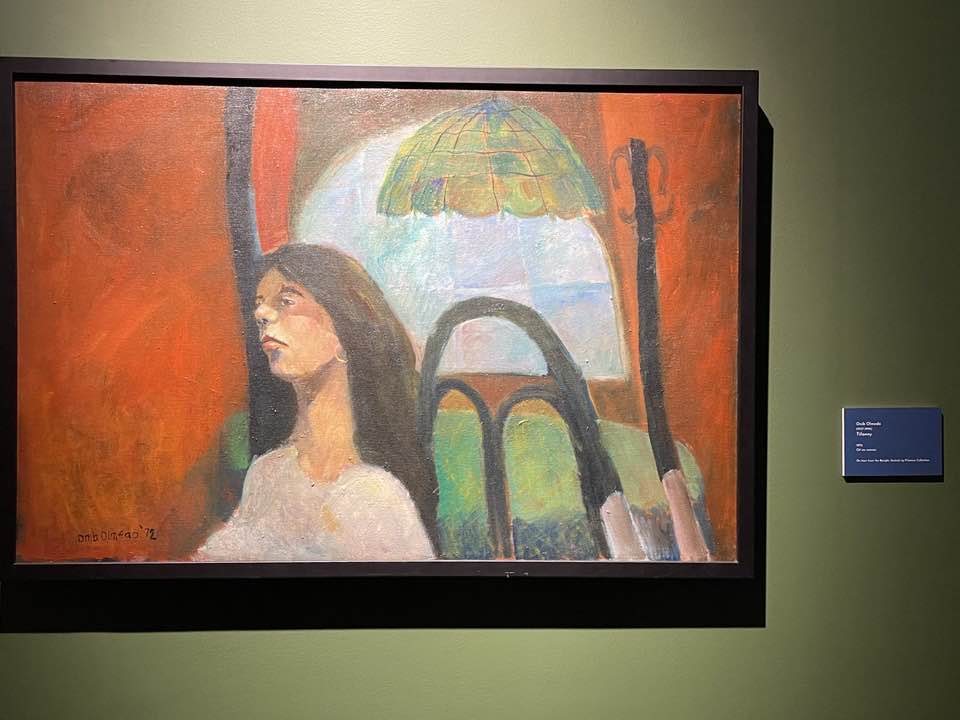
Another highlight is Junyee’s 2008 wooden sculpture dubbed “Ayaw Ko.” At first, one can mistake this for another ordinary sculpture of a native Filipino. A closer look, especially at the back, shows that it is, in fact, a striking depiction of the Filipinos’ struggle with colonialism. “In front, you’ll see a very traditional Filipino, but at the back, a flag of another country (America) is painted on him. It shows the struggle to be free from colonialism, to create an identity of our own,” Orello said.
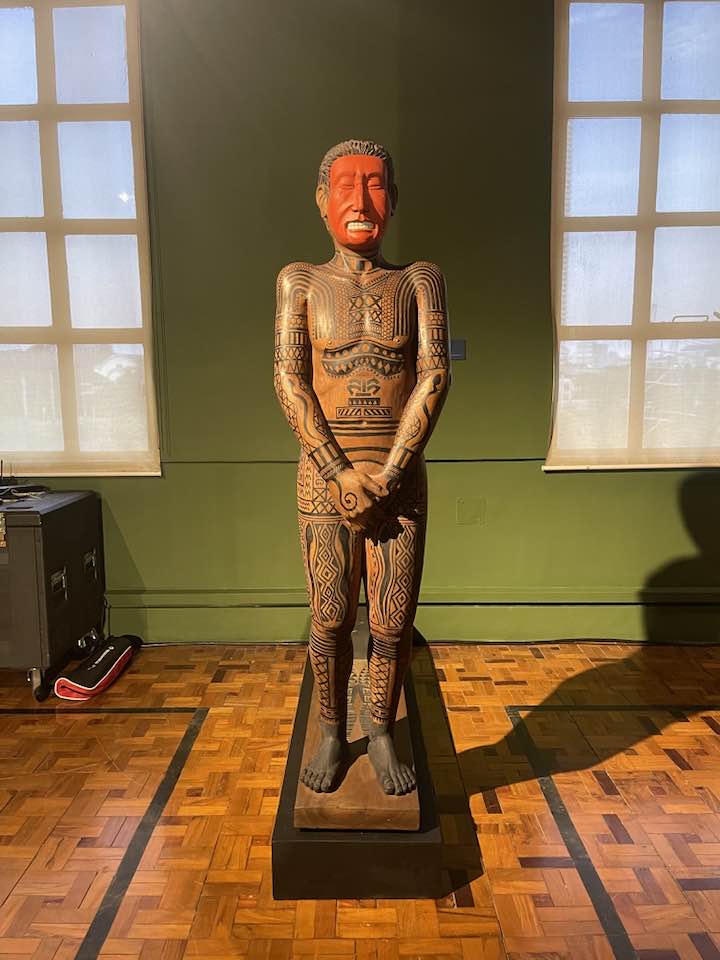
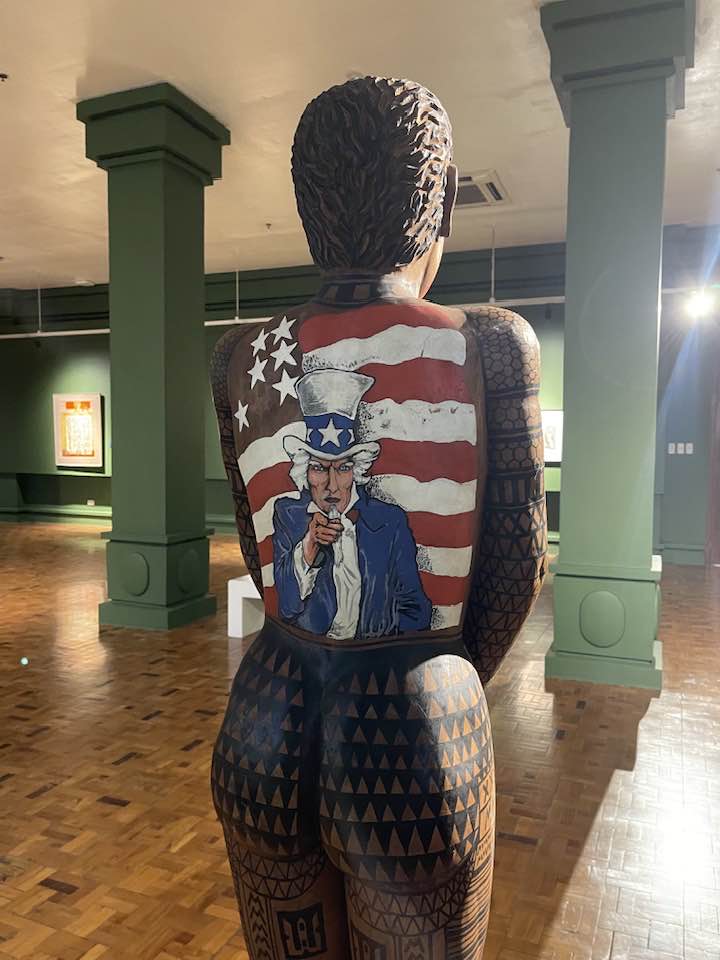
Then there’s the massive “St. Michael Duels the Devil” painting by Charlie Co—the first masterpiece that BSP purchased from the renowned Bacoleño artist. In an interview with DYRL Radyo, Co said that his thought-provoking, monochromatic painting is about wars and raises the question, “Why is this happening and why does it seem we cannot stop it?”
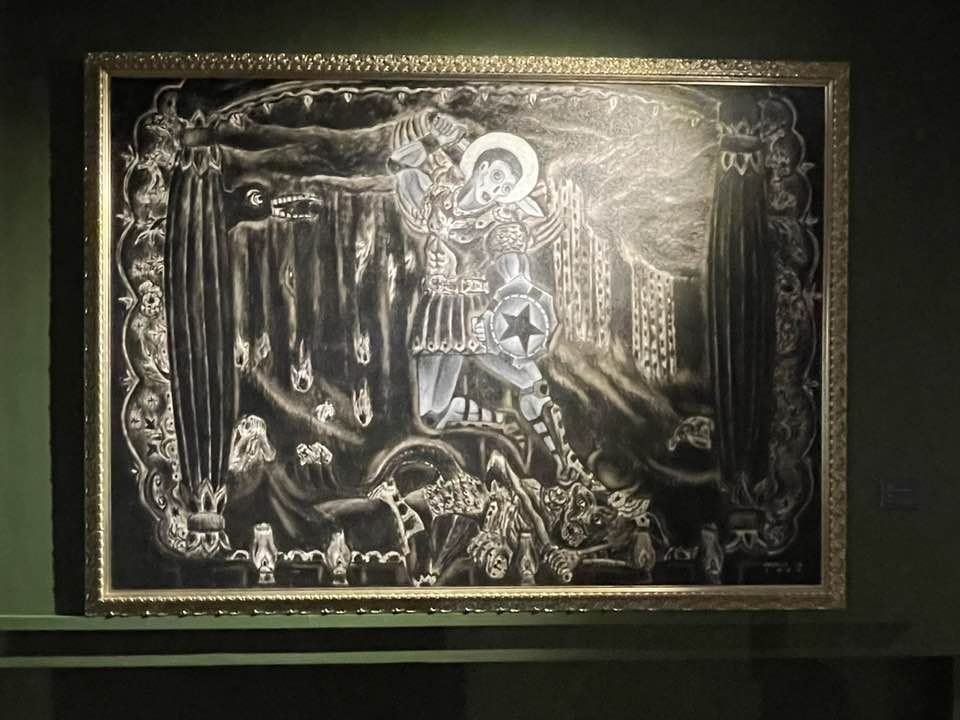
Related story: This artist’s tribute to Sansó honors the master’s enduring themes
Related story: Art within Reach: Artists shine at Ortigas Art Festival 2025
After Pagmulat, which translates to “becoming aware,” comes the second part of the exhibit titled Pagtanaw, or “to look ahead.” Located at Gallery XIX of the National Museum of Fine Arts, Pagtanaw looks back on the society’s past to offer insights for the present and future. It features artworks from the late 1980s to the 1990s when, according to BSP, “artists reclaimed their freedom to define identity, examine human conditions, and challenge inherited narratives” following the Philippine Martial Law.
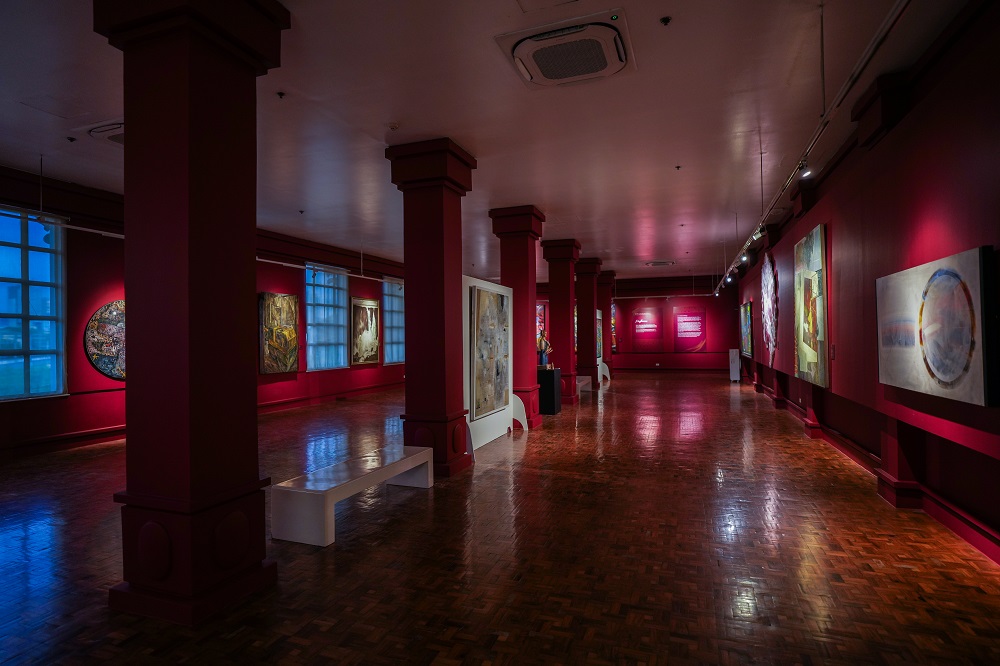
Pagtanaw “invites viewers to see art as an active space—one where meaning is fluid, understanding continues to evolve and questions remain open.” It features art created and viewed from a wider lens. Themes include not only the daily struggles of Filipinos, but also their travels, hopes, and dreams.
This is reflected in artworks such as Dan Raralio’s “Psychology.” Raralio used synthetic marble and brass pull to form a realistic soft pillow sculpture with storage space inside. Complete with a functional lock and key, the sculpture symbolizes the value of safeguarding one’s dreams.
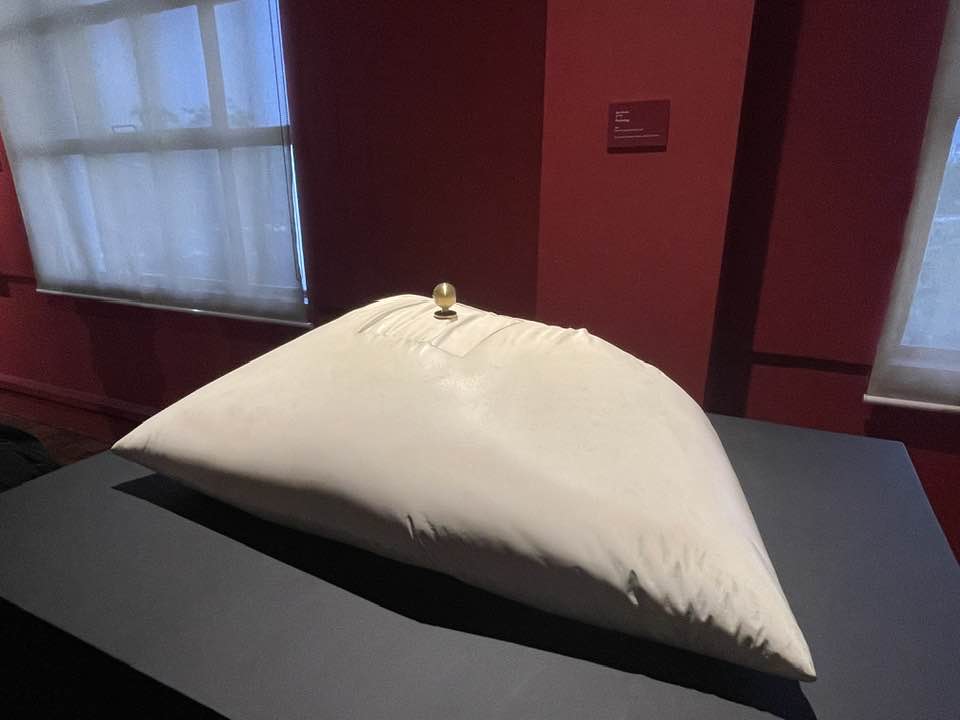

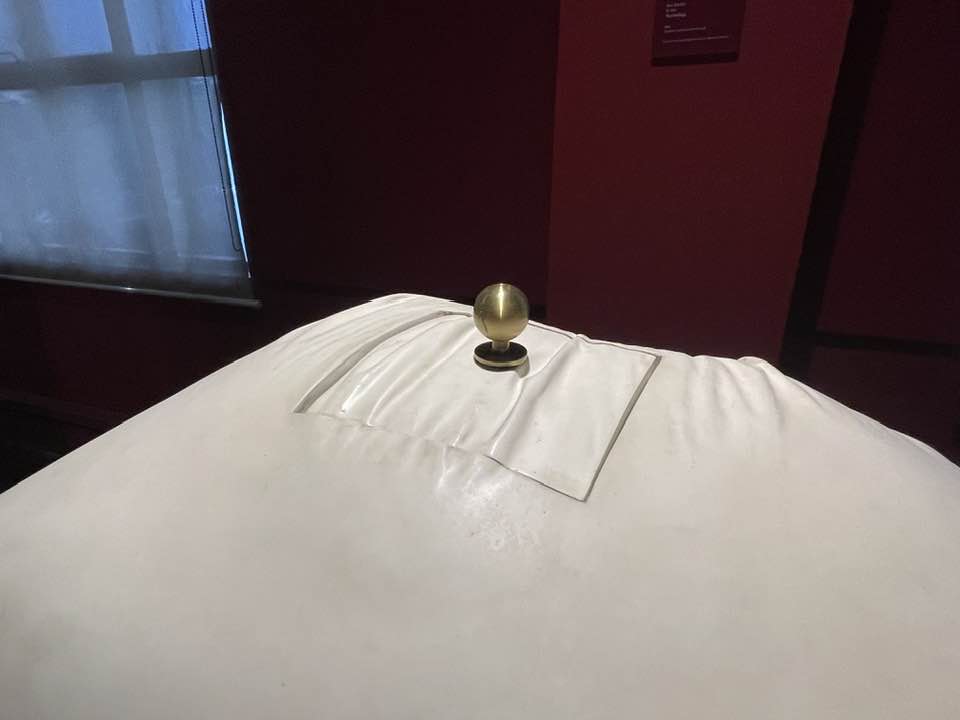
Across Raralio’s “Psychology” is another notable piece showcasing the Filipinos’ inventive approaches to contemporary art. This oil painting on canvas by award-winning artist Patricia Perez Eustaquio demands attention for its large size and unconventional canvas shape. One can easily mistake it for abstract art, but a look at its placard, printed with the artwork’s title, “Untitled (Butcher’s Blossom) IV,” clues you in on what it really is—a piece of raw meat.

Prominent figures featured in BSP’s Kultura. Kapital. Kasalukuyan include BenCab and Vicente Manansala, whose works are displayed alongside contemporary artists Santiago Bose, Roberto Chabet, Emmanuel Garibay, Nunelucio Alvarado, and Ofelia Gelvezon-Tequi, among many others. The exhibit is open for viewing at the National Museum of Fine Arts, from 9 am to 6 pm every day, through Nov. 15, 2027.
Related story: What happens when a billionaire believes in your art? Just ask this Filipino artist
Related story: Precious but empty: The contradictions of Nicola Bolla’s ‘Van Gogh’ chair

